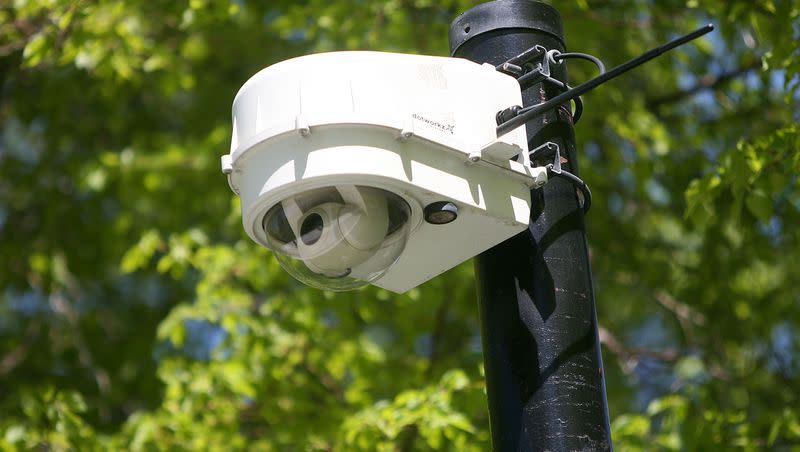Opinion: Did we ever really solve the problem of the federal government spying on Americans?

- Oops!Something went wrong.Please try again later.
- Oops!Something went wrong.Please try again later.
The American public has a short attention span, often fixating on a subject for a while, then moving on as if it has been solved.
Twenty-two years ago, I found myself on various shows, talking about shark attacks which, while dangerous, were suddenly capturing an almost obsessive amount of public attention. In reality, they were happening at a rate on par with a statistical average.
In 2016, clowns were the rage. They supposedly were doing evil from New Zealand to Utah. People were terrified. Then, just as quickly, the clowns seemed to disappear.
In 2014, people began to dump buckets of ice over their heads to raise money for amyotrophic lateral sclerosis, or Lou Gehrig’s Disease. The stunt brought in a 187% increase in funding that year, which helped research tremendously, according to the ALS Foundation. But no one seems to be dropping buckets on their heads any more, even though the disease is still with us.
And in 2013, the nation went temporarily crazy about the government spying on regular people after Edward Snowden left the country and began talking. Snowden had been working at the National Security Agency on behalf of outside contractors, and he leaked a lot of documents that showed the extent of government surveillance on regular people.
The federal government tried to capture him, but he eventually escaped to Russia, where Vladimir Putin gave him Russian citizenship. American politicians, meanwhile, talked about having a national dialog about surveillance. Laws were changed. The USA Freedom Act was passed. People moved on.
But maybe they shouldn’t have.
Writing for the Orange County Register this week, former CIA analyst and current senior fellow at the Cato Institute Patrick Eddington noted that Section 702 of the Foreign Intelligence Surveillance Act is up for reauthorization by the end of this year. Section 702 lets the government target foreign people outside the United States for surveillance.
If this section lapses, Eddington wrote, the government could rely on an old executive order to keep the program going with no judicial oversight, something the Cato Institute learned years ago after it sued.
A 2002 audit of the program found that it also targeted U.S. citizens overseas, and possibly domestically. The program, Eddington writes, “was a total mess.” Whether or not this still is happening, he said, it “is a reminder about how much we don’t know about the scope and duration of U.S. government surveillance efforts that implicate or indeed violate the constitutional rights of U.S. citizens in the post-9/11 era.
“We don’t know how many other classified federal surveillance programs have been or are operating and the extent to which they may, or already have, violated the First or Fourth Amendment rights of Americans.”
And, of course, the emergence of artificial intelligence has opened entirely new avenues for spying.
Related
Writing for The New York Times, Paul Mozur and Adam Satariano reported earlier this year on new facial recognition software, as well as “a brain wave reader that can detect lies. Miniaturized cameras that sit inside vape pens and disposable coffee cups. Massive video cameras that zoom in more than a kilometer to capture faces and license plates.”
Add in drones, hacking software and computer vision algorithms, and these “can all be bought and mixed together to make a snooping cocktail of startling effectiveness.”
A Times editorial in 2018 noted that the Supreme Court ruled the government can’t collect location data from cell towers without a warrant. Private companies, however, are gathering the data and selling it.
Maybe we still should be fixated on this topic.
In his book, “Thinking Fast and Slow,” psychologist Daniel Kahneman describes fast thinking as something that comes in handy during emergencies, or when we need to react to screeching tires. Unfortunately, if applied to complex subjects, it can lead to a false sense of instant certainty.
Slow thinking takes much more work and concentration. Eventually, it often overrides the conclusions of fast thinking.
Despite all the talk, we never really solved shark bites, scary clowns or ALS. We attacked them with fast thinking, then moved on. The same can be said for government surveillance.
In an increasingly dangerous world, law enforcement and the military need tools, but humans also desperately need basic rights and liberties. That presents a difficult, hard-to-solve problem.
We need some slow-thinking, ponderous and probing investigations of modern intelligence gathering. And we need it over and over again as new technologies continue to threaten privacy.
